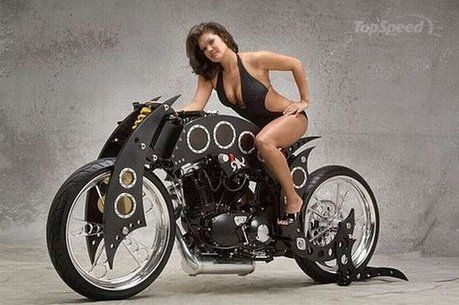
We have a saying in Dutch: ’You shouldn’t tie the cat to the bacon’. Well, exactly that happened when I visited Mark Upham (British Only Austria) and his family last summer. I had seen the '29 Model 18 on his website, and told myself that I didn't need another Norton (I had three already), that it was just too expensive, far from original, and not even a flat-tanker. I should have known better. We had a very pleasant week fettling and riding many of Mark’s bikes. The Norton didn't need attention, but what harm could come of a short test ride? I wheeled it out of the showroom, started it, and rode off; it was
 just fantastic!
just fantastic!Over the next few days, I had the pleasure of experiencing many other bikes; changing their oil, fixing small problems, taking them for rides, but somehow, every day, I just had to take a spin on the Norton, liking it better and better. Eventually, Mark told me to stop fooling myself, made me an offer that I could not refuse and that settled it; I had another Norton in the shed.
This Model 18 is not a 'pretty' bike, but it looks so good, if you can appreciate the difference. Funny enough this is recognized by many non-motorcyclists. Never before on any bike did I get the
 'thumbs-up' so often, from complete strangers, while sitting at a traffic light. It must be due to the bike’s purposeful look and scruffy appearance!
'thumbs-up' so often, from complete strangers, while sitting at a traffic light. It must be due to the bike’s purposeful look and scruffy appearance!It’s not difficult to understand why I like this bike so much - it just goes so well! Nortons from this era are very long and low (they have been compared to ferrets) and the build quality of the frame allows for a stable ride, and very spirited cornering. Further, lack of parts like
 speedometer, dynamo, headlamp, and battery makes them very light, which makes acceleration quicker, and handling easier.
speedometer, dynamo, headlamp, and battery makes them very light, which makes acceleration quicker, and handling easier.But what really makes this Norton special is the engine. I have a 1928 Model 18 which has essentially the same, but I immediately noticed that the '29 feels much smoother and
 more powerful. It revs higher and doesn’t seem to vibrate that much. On the road the '29 Model 18 is quite a bit faster than the '28, due to a stronger engine and taller gearing.
more powerful. It revs higher and doesn’t seem to vibrate that much. On the road the '29 Model 18 is quite a bit faster than the '28, due to a stronger engine and taller gearing.A clever engineer has had his way with the internals of this machine. Out of curiosity I lifted the head and barrel to have a look inside. Clearly, the flywheels have been lightened; normally square, they now sport polished ‘knife-edges’. The piston looks more like the slipper type you’d expect to find in a racing International engine. The inlet valve is much bigger than the exhaust valve, which is also non-standard as far as I know.

The builder found an ingenious way to convert the Sturmey-Archer gearbox to a primitive form of positive stop operation; the lever on the right side of the handlebar operates a rod that blocks first gear and neutral, leaving only second and third gear. It took a while to get used to, but it really works!
Other non-original parts include the front forks; my guess is that they were robbed from a 1930s International. The carb is a later Amal 276. The previous also owner fitted a modern Dunlop tyre to the rear wheel, which isn’t period but it has a round profile, which helps cornering a lot. I
 have been told that the front brake comes from a 1930s Velocette, which works well and looks terrific with that air scoop! Very nice final touches are the handmade thin-guage primary chain case, which has been crafted to fit perfectly, and the lovely Brooklands exhaust can. And it runs on Castrol R40!
have been told that the front brake comes from a 1930s Velocette, which works well and looks terrific with that air scoop! Very nice final touches are the handmade thin-guage primary chain case, which has been crafted to fit perfectly, and the lovely Brooklands exhaust can. And it runs on Castrol R40!








No comments:
Post a Comment